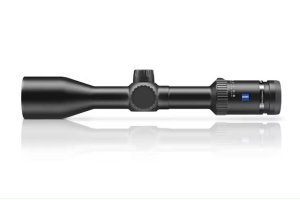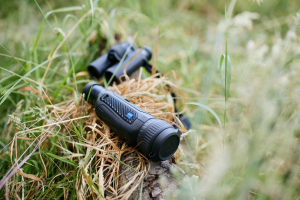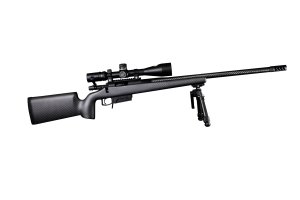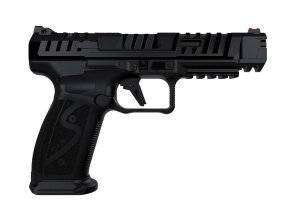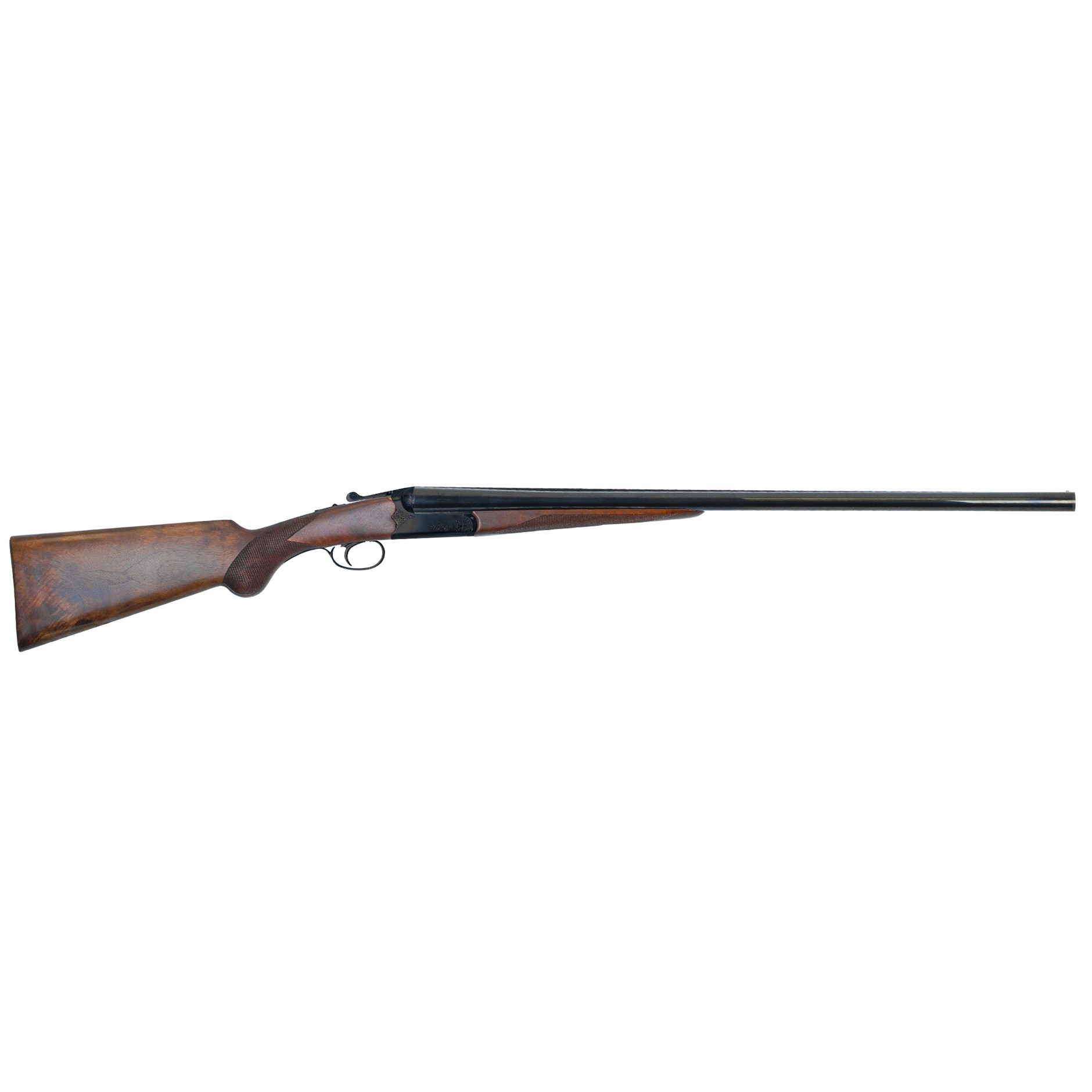
PRODUCT REVIEW - Webley & Scott Kilworth Shotgun
Paul Miller enjoys the latest Webley & Scott shotgun
Webley & Scott is a well-known English brand founded in Birmingham in 1790 which, more than two centuries on, still produces top quality shotguns and is now jointly owned by an Aussie businessman/ manager in the UK and the Fuller Group here in Australia. I was delighted to be offered one of their quality side-by-side shotguns for review, as I’ve always had a soft spot for them.
The first shotgun I ever fired was while spotlighting from the back of a ute with my late uncle on his country property at Waubra near Ballarat. I can’t tell you how proud I felt as a 12-year-old to finally be given a “real man’s gun” and the chance to shoot a few rabbits around the hay sheds. That lovely Beretta 12-gauge was my eldest cousin’s 21st birthday present and I was a little nervous using it until I’d bagged a few rabbits.
I fell in love with shotgunning that very night on the back of the ute and have been a committed shotgunner and frequent sideby- side user ever since. So back to Webley & Scott. The most recent addition to their product line-up is a quality side-by-side in 12-gauge called the Kilworth which is a very impressive piece of equipment.
Stock and fore-end
The Kilworth could best be described as a classic English game gun. The stock is 14.75" long with an elegant Prince of Wales pistol grip and no recoil pad. Where you might normally expect a recoil pad there’s a checkered butt plate which is very popular in UK game-shooting. The stock bolt is accessible via two screws which release a barely-visible panel centered in the checkered rear end of the stock. The timber is said to be 2.5 grade walnut and tightly grained with fine parallel figuring and a nice oil finish.
Stock drop dimensions are 1.5" at comb and 2.25" at heel, a nice compromise for most shooters. There’s a little cast for right-handers but as a lefty I felt quite comfortable shooting Skeet. These dimensions, coupled with the Prince of Wales grip, felt good in the hand and meant control of the gun’s mount and swing were pretty much effortless. It had that ‘alive but controllable’ feel of a high-quality, wellbalanced gun.
Both the long splinter-shaped fore-end and stock have fine laser-cut checkering which gives secure grip and perfectly complements the rest of the gun. The fine fore-end would necessitate the use of shooting gloves or a barrel sleeve if firing numerous shots in a short space of time, as your fingers will definitely make contact with the barrels. The bulkier American beavertail fore-end gets around this problem but English guns always have these elegant splinter versions, far more stylish but definitely not as practical.
Barrels
On unpacking the Kilworth the first thing that struck me was superb bluing on the 30" barrels, a beautifully lustrous dark blue with a look of real depth. They’re chambered for 3" shells, steel proofed and come with the usual suspects in a five-choke selection and, as you’d expect on an elegant gun like Australian Shooter 19 this, these screw flush into the barrels. A raised and tapered file-cut rib draws the eye perfectly to the target and there’s a single brass bead at the muzzle.
There’s always debate around side-byside versus over-and-under shotguns as to which has the better sighting plane. To be realistic I think the latter wins the argument for competitive shooting, though the former with a raised rib like this isn’t far behind. The two barrels with that rib still draw your eye nicely and I found it no handicap whatsoever with this gun on clays (it would obviously be the same in the field). The English have historically favoured a side-by-side for game shooting, though quality over-and-under guns are now accepted on these traditional and upmarket shoots - how times have changed.
Patterning
At the board, both barrels shot perfectly to the same point of impact with patterns about 50/50 above and below point of aim, an impressive level of regulation when you see it proved on a pattern board. It gives added confidence when you know both barrels are well regulated and shooting exactly where you’re looking. I’ve never liked the term ‘point of aim’ as you point a shotgun, you don’t aim it.
The only time you ‘aim’ a shotgun is when patterning or shooting at a stationary target, which is pretty rare. Shotgunning is about moving the gun, having the courage to pull the trigger and smoothly following through after the shot. Try aiming a shotgun like a rifle when shooting moving targets like clays or game and you’ll invariably miss. Action
The box-lock action is nicely finished in semi-matt black and scallop-backed which looks smart and requires a lot more effort by the stock-maker when fitting stock to action. This alone is the sign of a better grade of gun. The single mechanical trigger isn’t selective so you’re always firing the right barrel first. This is typical of English game guns which are used on various species of driven birds, that is, birds coming at and over you from afar.
Your right barrel is tighter choked than your left as the second is invariably used for a closer follow-up shot, passing overhead or going away. That’s the theory anyway and for duck shooting this is usually fine. If chasing rabbits or foxes in Australia, you’d mostly expect across or away shots so you could put a more open choke in the right barrel and a tighter one in the left. If using steel shot you shouldn’t, for safety reasons, exceed half choke in either barrel as steel through a half choke equates to full choke with lead shot.
The single trigger is crisp and broke comfortably at around 5lb. The action and fore-end latch has minimal tasteful border engraving, while the initials WS in gold adorn the top of the opening lever and bottom of the action which also has Webley & Scott in gold. All very tasteful to my eye without looking ‘blingy’.
Shooting impressions
Every Webley & Scott shotgun we’ve reviewed down the years has been well made and handled superbly but this is a cut above, it felt alive in the hands yet perfectly controllable. Being a side-by-side it’s different to your typical over-and-under feel but this posed no handicap on clays and would feel especially nice in the field. Fitting a recoil pad would arguably make it more practical, as would a selectable trigger, yet this gun fits so well that perceived recoil isn’t a problem and, with its beautifully checkered butt-plate, you’d never risk damaging that checkering by laying it on a hard surface or leaning it against a tree.
I’m confident the Kilworth will be embraced by traditionalists in England and see no reason why side-by-side enthusiasts here wouldn’t love it too. It would also make a most capable side-by-side ‘novelty’ gun at clay events and is, as the Poms say, a very nice piece of kit! It comes with a smart semi-soft case of industrial foam inner and lookalike suede leather outer, not as robust as a hard case but perfectly useful if treated with respect.
I thoroughly enjoyed shooting the Kilworth which brought back a flood of happy memories of my uncle and cousins and a ton of school holiday adventures on the farm in Victoria all those years ago. Highly recommended.
Published by SSAA
May 2024 Australian Shooter, written by Paul Miller

